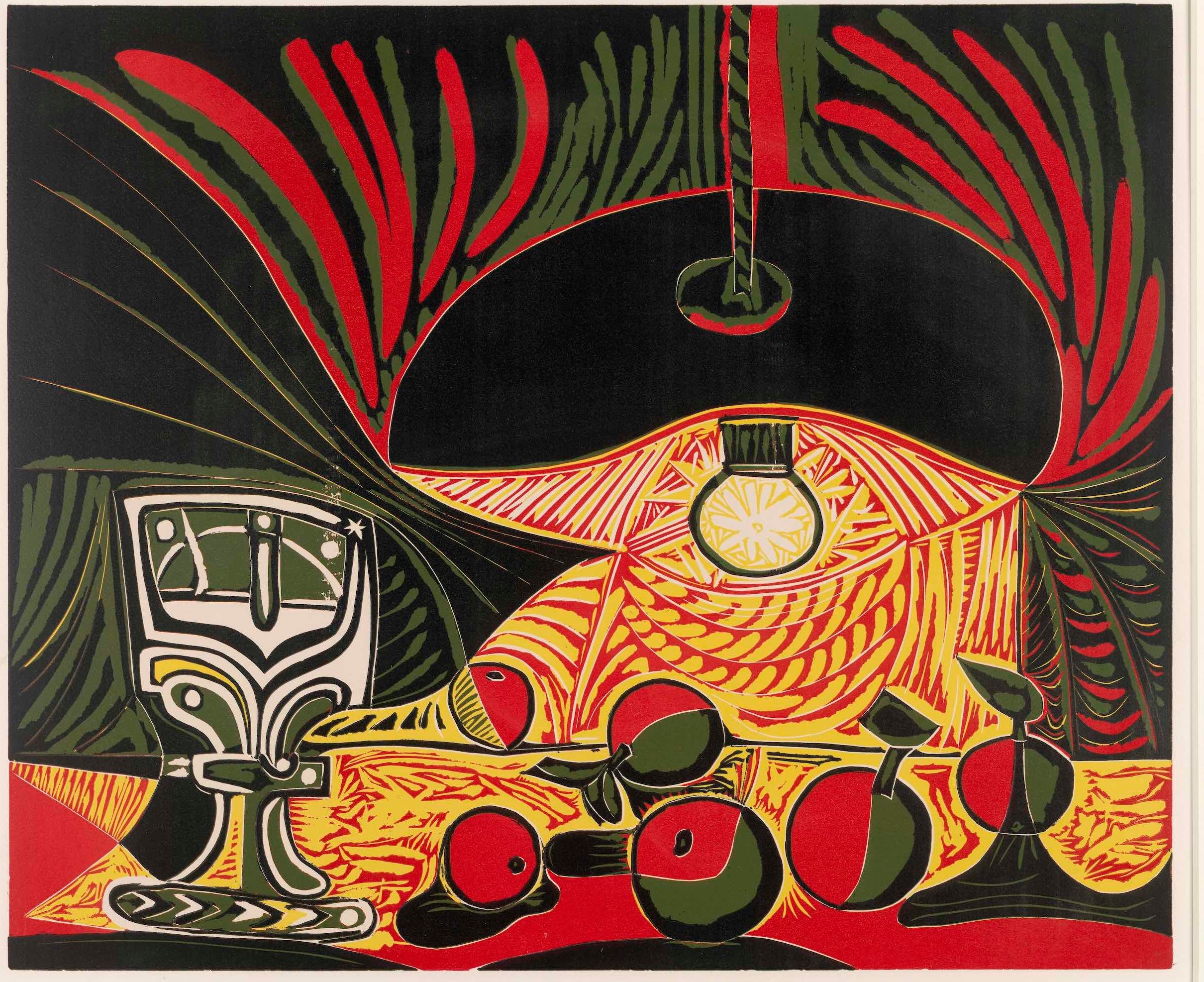
Pablo Picasso’s first permanent address in Paris was a Montmartre squat. Nicknamed the Washhouse Boat because the tenement building swayed and groaned in foul weather, it was inhabited by a rabble of poor artists, and its surroundings cast Picasso among society’s downtrodden. This was the time of Picasso’s “Blue Period,” defined by its forlorn monochromatic paintings, but there’s an etching that captures the spirit equally well.
A Frugal Meal (1904) makes a mockery of the Impressionist’s bountiful café, its couple is gaunt and melancholy, their demeanor of resignation offered with such empathy that one infers the artist drew on personal experience. Made with a salvaged zinc plate, it was Picasso’s first proper attempt at printmaking, a medium that would shadow and sometimes inform his broader practice for the next seven decades.
Pablo Picasso, The frugal meal (1904). © Succession Picasso, DACS, London 2024.
Picasso would go onto produce nearly 2,500 prints across the course of his career. This may come as a surprise to those more familiar with his paintings and sculptures, though perhaps it shouldn’t, given the artist’s omnivorous and prolific habits. An expansive exhibition at the British Museum is arriving to fill in any such blanks in the public’s imagination. Simply named “Picasso: Printmaker,” it gathers around 100 etchings, lithographs, aquatints, and linocuts that evidence how Picasso explored the medium of print despite limited formal training.
Pablo Picasso, Leaping bulls (1950). © Succession Picasso, DACS, London 2024.
The show is the culmination of two decades of targeted and attritional collecting and offers the British Museum as an institution keen to go beyond its reputation for staging narrative exhibitions around historic artifacts. When the museum acquired 19 largely abstract prints in 2016, it declared that it had filled “the last important gap” in Picasso’s oeuvre of prints. In the run up to the exhibition, the museum’s director, Nicholas Cullinan, lays claim to showing Picasso’s “UK’s most extensive collection of prints”. With well over 500 prints, this hardly seems like hyperbole.
Pablo Picasso, Faun uncovering a woman(1936). © Succession Picasso, DACS, London 2024.
Picasso’s explorations of print were intense sporadic affairs, and his two most celebrated episodes are on full display here, full of lust and curves and trickery. The first belongs to his Vollard Suite, named for the art dealer who commissioned 100 Neoclassical etchings from the Spaniard in 1930 (though it took him seven years to complete). Though not drawn from a single source, they allude not only to classical mythology, but art history’s earlier masters of print. Faun Uncovering a Woman (1936), for instance, plays with Rembrandt’s depiction of Jupiter and Antiope loosening lines and veering into abstraction.
Pablo Picasso, Picasso, his work and his audience (1968) © Succession Picasso, DACS, London 2024.
The second of Picasso’s vaunted forays into printmaking is his “347 Suite,” named for the number prints he executed in a seven-month blitz in 1968. The British Museum boasts the full set, but given the works riff and repeat—he would sometimes make up to eight prints per day—only 28 are on display. They are erotic and fantastical works filled with beasts, breasts, and bands of blackness. In its best-known work, Picasso, His Work and His Audience (1968), the octogenarian quite bluntly confronts himself and his viewer.
Pablo Picasso, Pike II 1959 © Succession Picasso, DACS, London 2024.
“[Picasso’s prints] demonstrated a deep understanding of the medium and eagerness to experiment and innovate,” said Catherine Daunt, the curator of modern and contemporary prints. “Printmaking became, for Picasso, the art form through which he could tell stories and follow a thought or idea, few artists contributed more to the medium in the 20th century.”
“Picasso: Printmaker” runs from November 7 to March 30, 2025.